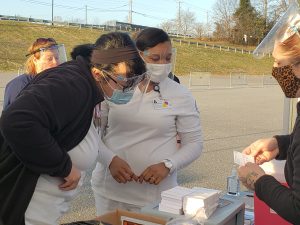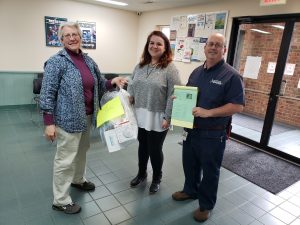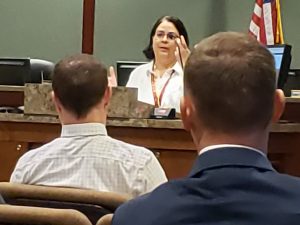New! Health Equity Assessment and Report for Henry-Martinsville
- Henry Martinsville Community Health Equity Assessment 2023
- The Harvest Foundation MHC Health Equity Report
What is Community Health?
Community Health focuses on identifying and understanding the needs of various groups within the community. Population groups can include people in a certain ethnic group, in the same age bracket, individuals of the same gender, or people with a certain disability or disorder. Once these needs are
understood, the work of building solutions begins. This is accomplished with input from those affected
along with community partners whose missions support service to people in need.


Examples include:
- Holding diabetes prevention classes for a group of pre-diabetics at a large industrial plant during the regularly scheduled lunch hour -- providing lunch.
- Engaging a group of concerned citizens fearful of lack of access to healthcare once their only hospital closed in planning that results in a unique and workable solution.
- Embedding community health workers in the communities of vaccine hesitators to help them understand the purpose of the vaccine and why they should be vaccinated -- and then removing barriers (like transportation) so that they can get to the vaccine appointment.
This is just a sample of the ways Community Health meets people where they are and designs programs or policies to reduce barriers to optimum health.
Data Collection, Analysis and Use
In order to understand the very specific needs of various groups of people, Community Health organizes community health needs assessments and improvement planning. This is a huge community effort involving medical and social services partners as well as citizens. The process, which usually takes at least a year, provides a comprehensive look at where health needs exist and puts forth evidence-based solutions to address them.

Links to other local Community Health Assessment & Improvement plans in the West Piedmont Health District follow:
- Franklin County Community Needs Assessment & Improvement Plan 2021-2023
- Patrick County Community Needs Assessment & Improvement Plan 2020-2023
- Virginia Rural Health Plan 2022-2026. The Virginia State Office of Rural Health has announced the release of the Virginia Rural Health Plan 2022-2026 (VRHP). The goal of this working action plan is to showcase the resiliency and highlight the assets of the Commonwealth’s rural communities. The scope of the VRHP has been advised by a series of community conversations and site visits that took place between the months of October 2019 through March 2020.
-
Virginia Well-Being. Use this tool to learn more about your community by searching by your city or county. Compare rates with the Commonwealth of Virginia and other localities by clicking the boxes. This tool is easy to use and has lots of data.
Funding Interventions, Piloting New Ideas
Community Health in the WPHD takes the work a step further by identifying funding sources and facilitating grant submissions for promising programs aimed at improving community health outcomes. For example, a grant from the Appalachian Regional Commission was secured for Patrick County to obtain expert guidance in looking how health care access could be improved. A companion grant provided funding to pilot the project.
Keeping Current; Providing Expertise
 Community Health requires that health department personnel are out in the field, bringing services to people where they are. This means health department staff are active in causes like substance user disorder (Opioids Taskforce), lifestyle health (community gardens), and community building (United Way and other nonprofit organizational boards).
Community Health requires that health department personnel are out in the field, bringing services to people where they are. This means health department staff are active in causes like substance user disorder (Opioids Taskforce), lifestyle health (community gardens), and community building (United Way and other nonprofit organizational boards).
